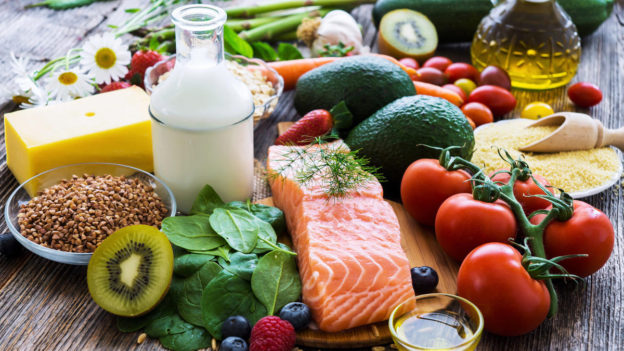Spoiler Alert!
There is no one-size-fits all diet. I tailor my clients’ diets, to their health situation, body’s needs, and personal wants. But I need to believe in something. I need to give my clients general easily followed dietary guidelines.
So, I went through all the research on what foods cause disease, research on what balance of macronutrients (protein, carbs, and fat) leads to disease or health, and I listened to other experts in my field talk.
One guideline comes shining through.
Whether it is paleo or vegan, high carb or low carb, diet to prevent cancer or to heal the gut, to reduce inflammation or improve energy, they all have one thing in common. They are based on whole foods not processed foods.
What IS a Whole Food?
Whole foods are foods that are in their real natural form. A whole food is food that has not been altered since it was harvested from the ground or animal. A chicken breast, a pear, a sweet potato, and an onion are all whole foods.
A processed food goes to a factory and is altered, treated,or combined as an ingredient into some food product. Not only is the food refined and changed from its natural form, but sugar and other junk ingredients are often added as well. Bread is an example of a processed food; wheat doesn’t come out of the ground looking like a loaf of bread.
Are ALL processed foods bad?
We can also eat minimally processed foods, such as olive oil. It doesn’t come off the olive tree in a glass bottle. But it is still a whole food, one ingredient, and good for you.
Some foods have to be scrutinized to decide if they are really minimally processed. Almond milk may fall into either category of minimally or largely processed. When choosing a brand of almond milk, it is important to examine the ingredients. Some brands of almond milk add sugar, carrageenan gum, xanthan gum, and preservatives. Other brands of almond milk contain only almonds, water, and salt. The latter brands are obviously the minimally processed whole foods.
How do I navigate the choices? What SHOULD I eat?
As you decide about what foods to eat, practice asking yourself “is this a processed food?” It is a simple straightforward way to look at food. Let it guide you to make healthful choices. Remember, you do not need to be perfect or eat whole food 100% of the time to feel the benefits. Try as often as you can. The more you stick to real whole foods, the more your body will thank you for it.
Intrigued? Want to know more?
This article is an adaptation of a chapter of my eBook. If you liked it, consider reading the rest!

